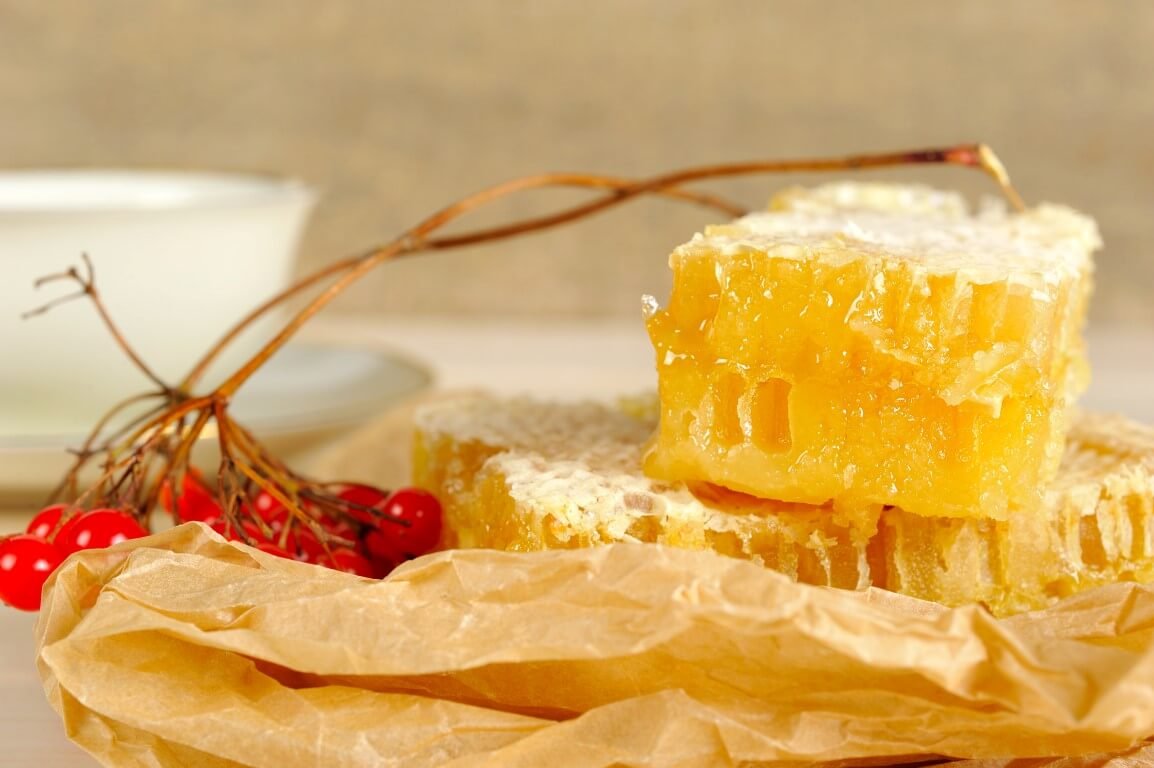Blog
Shelf life of honey

All foodstuffs are required by law to have a stated expiry date. Honey products - is no exception. However, once opened, a jar of honey can slowly empty over months, until finally we've dug down to the bottom. The shelf life of honey depends on a number of key criteria: the maturity of the honey; the composition and quality of the honey. So, how long is the actual shelf life Honey?
Maturity of honey
Although the main component of honey is carbohydrate, the protein and other components can cause honey to turn rancid. Fresh honey is the most acidic over time. Fresh honey is easily distinguished by the beekeeper from the comb: if the comb is not open, or if only a small part of the aperture is open, the honey is fresh. Such honey is very similar to sugar syrup, is liquid, contains a lot of water and does not tend to crystallize over time. Only mature honey from the closed combs should be harvested for long-term storage. Such honey can be stored for a very long time, similarly to cured or fermented products. The ancient Greeks described honey in their writings as a perpetually fresh product. The indefinite shelf-life of honey is evidenced by the baskets of honey found in the Egyptian pyramids, which were unchanged and still usable.
Composition and quality of honey
The longevity of honey is also determined by the substances it contains. The most powerful preservatives in honey are hydrogen peroxide, acidity and a low percentage of water. Water is said to be the source of life. When it is almost non-existent, any micro-organisms in such a medium die. The lower the water content of a product, the longer its shelf-life (which is why products are dried). So that Honey To have a long life, it must be fully prepared by the bees, with the wings ventilated to remove moisture and the eyes closed.
Hydrogen peroxide in honey also contributes to the death of micro-organisms. When the bees collect nectar, they return to the hive and pour it from their brood to each other until it reaches the honeycomb aperture. The bees' glands secrete enzymes that start to digest the honey. It is these enzymes that produce vendenil peroxide, a strong disinfectant and acidifier, as the nectar decomposes. Strange as it may sound, Honey is a highly acidic product (pH ~3 - 4.5). In such an acidic environment, bacteria and other micro-organisms also do not thrive, cannot reproduce and die. Since it is the various micro-organisms that are to blame for product spoilage, the shelf life of honey is almost unlimited.
So, if we believe in the authenticity of Egyptian honey, HoneyThe longest it has remained intact for more than 3 000 years so far. However, to ensure that the honey retains its good qualities, it is best stored in a dark, cool place.




